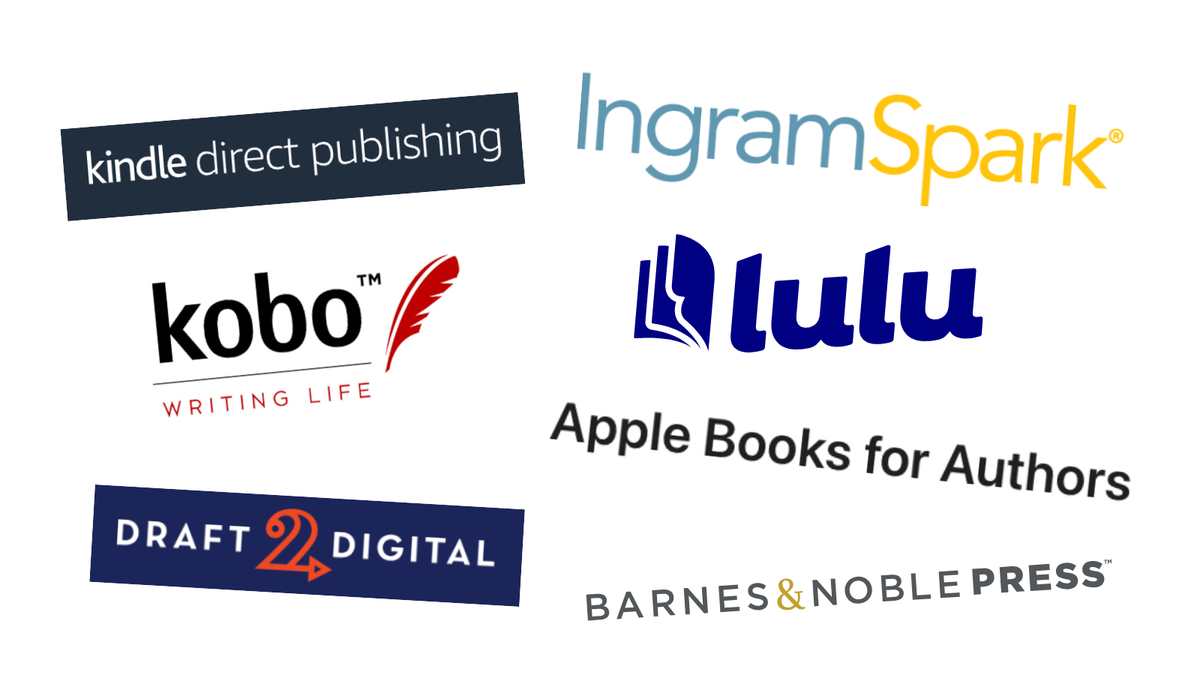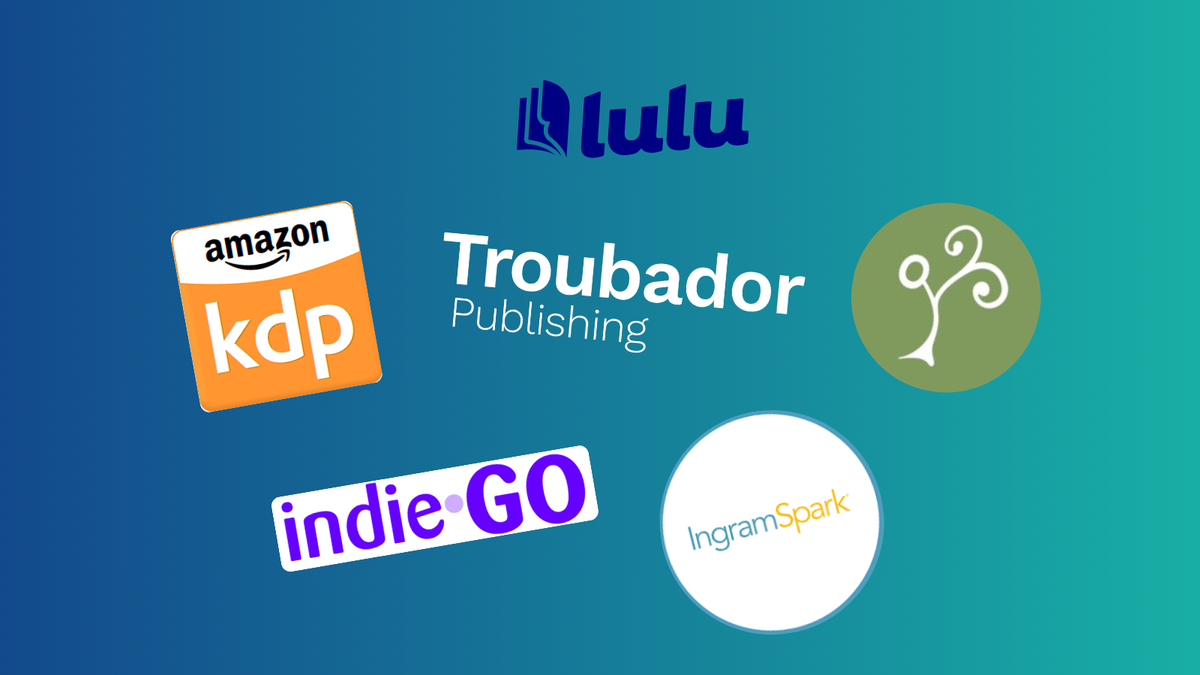
30th April, 2025
10 min read
The Top 5 Self-Publishing Tips To Follow and 5 Pitfalls to Avoid
Written by:
Alex Thompson
Self-publishing has opened the doors for more authors than ever before, but just because it’s accessible doesn’t mean it’s easy. From navigating different routes to publication and formats to making decisions about marketing and distribution, the journey can be as complex as it is rewarding. Many authors dive in with excitement, only to stumble over avoidable mistakes or miss out on opportunities that could have elevated their book’s success.
Whether you're publishing your first book or your tenth, having a clear plan and knowing what to watch out for can make all the difference to your publishing experience. In this article, I’m sharing my top five practical tips to help you publish with confidence, as well as five common pitfalls that we often see holding authors back. Read on to learn what works, how to steer clear of what doesn’t and set yourself up for a smoother, more successful self-publishing experience.
Top 5 Self-Publishing Tips
1. Define Your Goals and Match Your Approach
Before you dive into self-publishing, it’s crucial to define your goal (or goals) clearly. Are you focused on reaching as many readers as possible, attempting to build a long-term author brand, or simply publishing for the fun of it? All objectives are as valid as each other (and it’s not always about selling as many as possible for a lot of authors), but understanding your goals will help you choose the right path forward.
Self-publishing offers various routes to market, each with its own set of limitations and costs, both in terms of time and money. For instance, publishing exclusively as an ebook might be quicker and more affordable, but it limits your reach compared to publishing in multiple formats. On the other hand, creating a polished paperback or audiobook version requires more upfront investment and effort, but can help you reach different reader demographics.
By taking the time to understand the limitations and costs associated with each option, you can weigh the pros and cons in the context of your goals. Only once you have this clarity can you confidently choose the publishing approach that will give you the best chance of success. Ultimately, the key is to ensure that your strategy aligns with your unique goals.
2. Consider Publishing in Multiple Formats
If your goal is to reach as many readers as possible, consider publishing your book in multiple formats: print, ebook and even audiobook. Today’s readers expect books to be available in more than one format (for example, I exclusively read hard copy books and don’t own an ereader, but a lot of the Troubador team far prefer reading ebooks or listening to audiobooks), and meeting these expectations can significantly increase your book’s chances of success.
By publishing in multiple formats, you give readers more options, which increases your book’s visibility and accessibility. With more visibility comes more potential for sales. Each format has its loyal audience, allowing you to tap into different segments. Some readers prefer the experience of print, while others appreciate the convenience of e-books, and an increasing number enjoy audiobooks as part of their daily routines. Offering your book across multiple channels broadens your reach and helps ensure you’re not limiting your sales potential.
3. Source Professional Help Where You Are Weakest
No author is good at everything, and in today’s competitive self-publishing landscape, cutting corners on the quality of your book can significantly harm its chances of success. Competition in the self-publishing world is fierce. With literally millions of books being released each year, readers have more choices than ever before. If your book does not look or feel professional, it risks being overlooked or dismissed. This is why it’s essential to source professional help where you’re weakest.
For example, if you are not a confident designer, professional expertise is critical to ensure that your book’s appearance is as good as it can be. Or, if you feel less optimistic about your ability to market the book effectively, seek help to ensure your book has the best possible chance of reaching its audience. Whether it's editing, cover design, formatting or something else, every aspect of your book needs to shine to stand out from the crowd.
While it's tempting to save money by doing everything yourself, it’s essential to recognise that the investment in professional services, when necessary, pays off by making your book as good as possible. Quality is what will ultimately set your book apart and give it the best chance to succeed in an ever more crowded marketplace.
4. Have a Solid Marketing Plan
While enlisting professional help for PR, trade marketing or advertising can undoubtedly boost the visibility of your book, the reality is that authors who are looking to maximise sales are often the best advocates for their books. You know your story, your characters and your message better than anyone, and it’s this personal connection that can resonate most with readers. That’s why having a solid marketing plan is crucial. It ensures you’re consistently working to get your book in front of the right audience.
Your marketing plan should be as detailed and thoughtful as your book itself. It’s not just about posting a few social media updates or sending out occasional emails. You need to have a clear strategy in place that outlines where you will focus your efforts. That might include social media, email newsletters, interviews, a blog and attending events among other promotional activities. There is no correct answer to what marketing is best for a book - it is unique for each project.
Trial and error is your friend here. Think of marketing as an ongoing process rather than a one-time push, and don’t be afraid to give something a go and, after a while, objectively review whether it is worth doing again or not. Building relationships with your readers and staying visible in your niche can have a lasting impact on your book’s success. Without a strong marketing plan, even the best book can get lost in the noise.
5. Take Your Time Reviewing a Contract
If you choose to seek professional help, whether it's from a publisher, agent or service provider, it’s essential that you fully understand the terms of any contract you sign. The details in a publishing contract can have long-term effects on your rights, royalties, and creative control, so don’t rush through this crucial step.
Take the time to read the contract carefully and, if necessary, seek advice from professionals who can help you interpret the language. Organisations like The Society of Authors, with whom we work closely, can provide valuable guidance and resources to ensure you’re not signing away rights or agreeing to terms that don’t align with your goals. Even if the terms seem straightforward, it’s easy to overlook hidden clauses or restrictive agreements that could limit your opportunities later.
Never proceed with a contract if you’re not 100% certain about what you're agreeing to. If something feels off or unclear, ask questions, get clarification or consult a legal professional before making any commitments. Your future as a self-published author hinges on these decisions, so make sure you’re entering into any agreements with complete confidence and understanding.
5 Self-Publishing Pitfalls to Avoid
1. Weak Metadata
In the world of self-publishing, metadata is the unsung hero. It’s the information hidden behind the scenes that tells the book trade and readers what the book is all about. Think descriptions, keywords and categories, among many other things, all of which play a huge role in making your book discoverable. However, weak or poorly optimised metadata will doom your book to obscurity, no matter how great the content is.
High-quality metadata is what sells your book to retailers, readers, and the book trade. It is how the book trade now purchases their titles, and so cannot be overlooked. When your metadata is strong and relevant, it helps your book appear in search results, recommendations, and curated lists, making it easier for potential readers to find. On the other hand, if your metadata is vague, misleading or irrelevant to your book’s content, it will be quickly buried under the millions of other books published each year.
Take time to craft a compelling book description, choose relevant categories and select keywords that genuinely reflect the themes and genre of your book. To follow on from a tip above, this may be one of the most critical areas you decide to enlist professional help with, as while metadata can seem a small detail, it can have a significant impact on your book’s visibility and, ultimately, its sales.
2. Aiming for Bookshop Stocking with Print-on-Demand
If your goal is to see your book on the shelves of physical bookshops (either immediately or as a long-term objective), relying solely on print-on-demand (POD) services is not a good strategy. While POD is a fantastic option for some self-published authors, it comes with limitations that make it almost impossible to meet the requirements of traditional brick-and-mortar bookshops.
Bookshops want stock that they can purchase in bulk and, more importantly, return if it doesn’t sell. POD services typically do not offer these return options, as they operate on a print-on-demand basis - a copy is only printed once an order has been placed and is sold on a firm sale basis to the purchaser, whether that be a reader or a retailer. Additionally, bookshops expect a high-quality end product. While POD technology is improving, the quality of printed products is far more limited than that of those produced using short print runs, and more often than not, they do not meet the strict standards that physical retailers demand.
Finally, bookshops require a reliable distributor that can supply books promptly with consistent quality. POD doesn’t provide the same level of reliability or volume that traditional distributors can offer. If physical bookshop placement is part of your long-term vision, consider using a conventional printing route or working with a distributor who can meet the needs of retailers.
3. No Distribution Plan
One of the biggest mistakes a self-published author can make is neglecting to develop a solid distribution plan. It's crucial to ask yourself: How will you get your book into the hands of readers? If you don’t have a proactive, multi-channel approach to distribution, the chances are that your book simply won’t reach enough people to make an impact.
Relying on one platform or method can severely limit your reach. While retailers like Amazon are powerful tools, it’s essential to consider other distribution channels to maximise visibility and sales. Consider selling your book through multiple retailers and wholesalers, such as Waterstones, Gardners (the most prominent UK wholesaler that supplies the entire book trade) and independent bookshops, as well as digital distribution platforms like Apple Books, Kobo and Amazon KDP. Don’t forget about libraries, audiobook platforms, and even direct-to-reader sales from your website.
The more channels you sell through, the more people will discover your book. However, you will require professional help to get into some of those channels, so ensure you have done your research to understand how publishers like Troubador can help you access all those channels and more.
4. Not Being True to Your Goals
Back to talking about goals again, I know! One of the more subtle yet damaging pitfalls in self-publishing is when authors lose sight of their goals. Every author has a different reason for publishing - some want to build a career and sell thousands of copies, while others simply want to share a story with family and friends or tick “write a book” off their bucket list. All of these ambitions are valid. The problem arises if you start comparing yourself to others or let external expectations steer your decisions.
It’s easy to get caught up in the noise, whether through bestseller lists, sales figures or social media posts showcasing big wins. If those outcomes don’t align with what you want from the publishing process, you could end up disappointed or burnt out. For example, pursuing commercial success when your true goal was creative expression may lead you to compromise on your original vision or leave you feeling disheartened by the pressure.
Self-publishing offers freedom, but that freedom only benefits you if you use it to serve your ambitions. Take the time to reflect on what success means to you, and make decisions that align with your vision. Staying true to your goals keeps the journey fulfilling and enjoyable.
5. Rushing to Publish
It’s completely natural to feel excited, even impatient, when your book is finally finished. After all the hard work of writing, it’s tempting to publish as quickly as possible, but rushing this final stage is one of the most common and costly mistakes self-published authors make.
Whether it’s the fear of missing a trend, the pressure of a self-imposed deadline, or just eagerness to get the book out into the world, acting too quickly can lead to decisions that don’t serve your long-term goals. You might skip essential steps, such as editing, overlook your publishing options, or settle for a platform or service that doesn’t fit your project. These shortcuts can compromise the quality of your book and hurt your chances of success.
Instead, take the time to thoroughly research your options. Consider your goals, target audience, and available resources. Think carefully about your publishing timeline, your distribution plan, and how you’ll market your book. A thoughtful, strategic approach will serve you far better than a rushed one, and your future self (and readers) will thank you for it.
Navigating Self-Publishing with Confidence
Self-publishing can be an enriching journey, but it’s also one that comes with numerous decisions to make, challenges to overcome, and pitfalls to avoid. From defining your goals and creating a solid publishing plan to avoiding the common pitfalls that trip up so many authors, there’s a lot to think about. And if you’re feeling overwhelmed or unsure where to begin, you’re not alone.
Many authors feel nervous about the process, especially when navigating it for the first time, and seek help from publishers like Troubador to manage everything on their behalf. We work with hundreds of authors a year to guide them through every stage of their publishing journey. Whether you need help developing your distribution strategy, ensuring your book’s metadata is on point, or simply want guidance to avoid costly mistakes, our team of self-publishing experts is here to help you make informed decisions that align with your goals and give your book the best chance of success. If you’re looking for expert support, a flexible publishing approach, and a team that genuinely cares about your book, Troubador is here to help.












